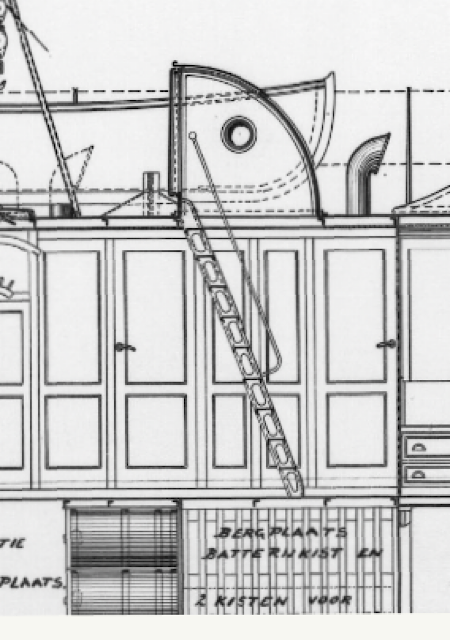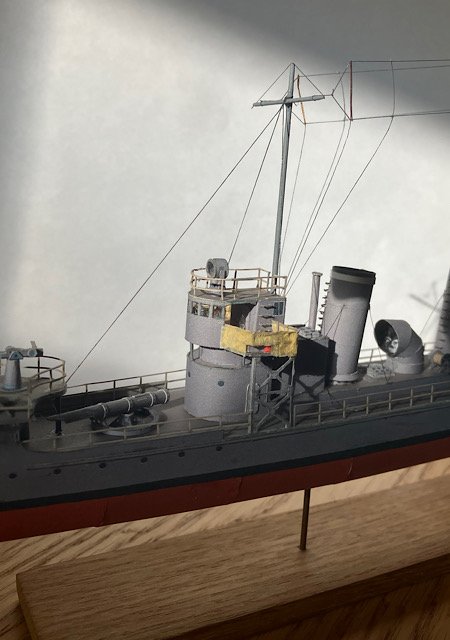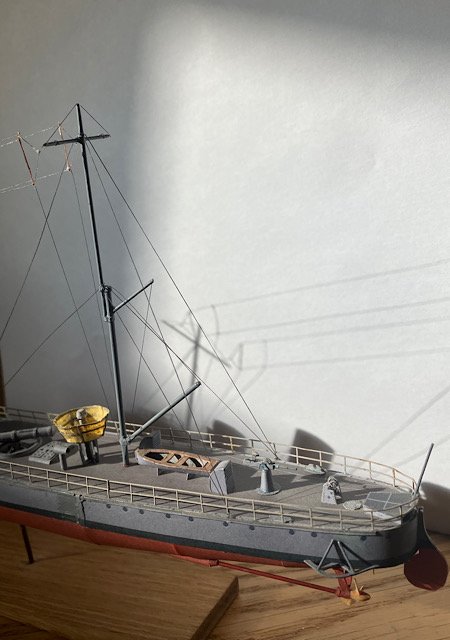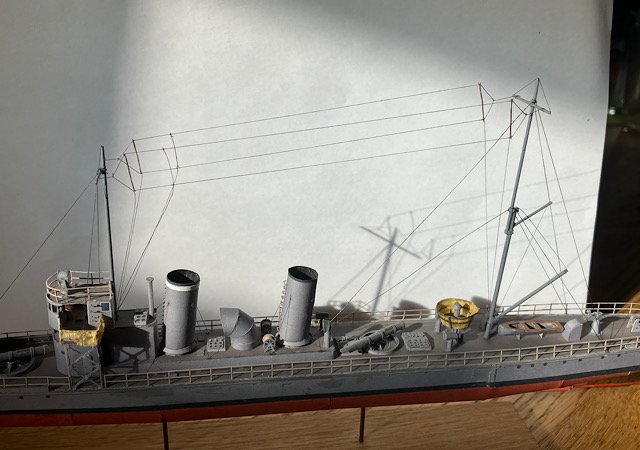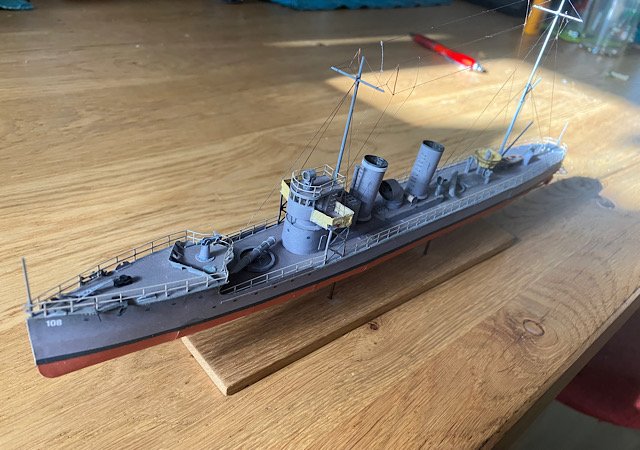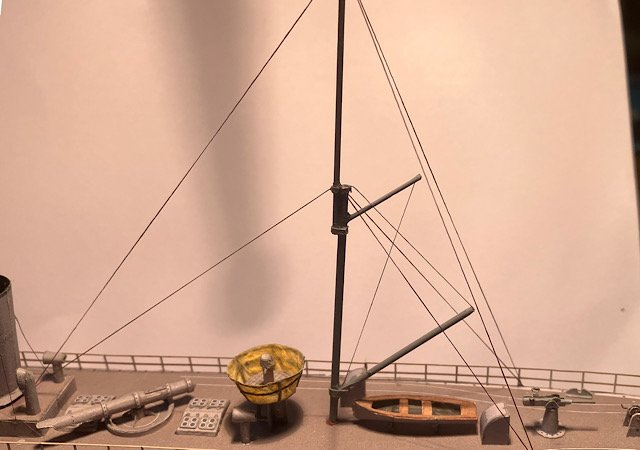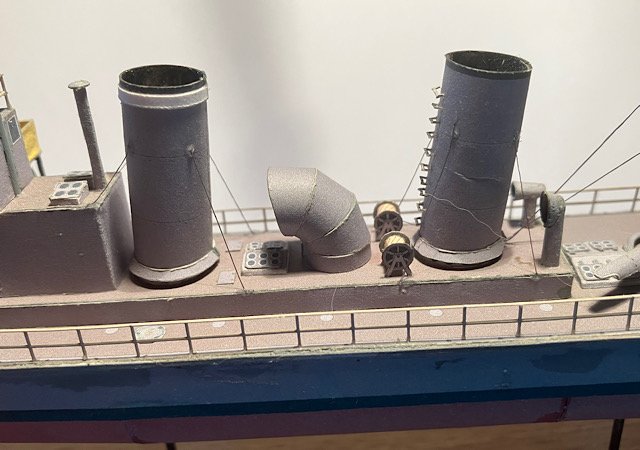-
Posts
3,513 -
Joined
-
Last visited
Content Type
Profiles
Forums
Gallery
Events
Everything posted by amateur
-
Smaller than I thought. I don’t know how it is in real, but on my screen gold and colours balance out quite nicely. Jan
-
With respect to the deck-camber: from the drawings that Fred Hocked posted in the Vasa forum, there seems to be considerable camber. Also: the way you draw the bottom timbers is not completely up to 'usual standards: the timbers lay flat on the keel, the planking goes down in the keel-rabet, leaving an open space to collect the incoming water. See drawing no 6, on this page: https://warshipvasa.freeforums.net/thread/87/vasa-ship-plans?page=3 Jan
-
Coming along nicely. Those things on the reardeck are not vents: just staircases to the lower deck (at least, ghey are in the dutch Z1, that was designed and build after the first Z1 became v108) Jan
- 100 replies
-
- digital navy
- v108
-
(and 2 more)
Tagged with:
-
My own observation: the forum had Clayton's model as main focal point. As soon as he finished his model, the remaining log's were mainly the 'standard' build logs of kit-versions of Vasa. Fred stopped being a regular visitor, because we were for the main part just lurkers, drooling at Clayton's beautiful model. And than it lost momentum as a community of Vasa-enthousiasts. But it still is a wealth of info, although it is sometimes difficult to find the info, as it was quite often just in casual remarks somewhere in a post.... Jan
-

Damaged model, looking for the original details on it
amateur replied to Kevin Kenny's topic in Wood ship model kits
Although this one has a mast too many….. Jan -

Damaged model, looking for the original details on it
amateur replied to Kevin Kenny's topic in Wood ship model kits
Nice model, although my huess is that there was the usual artistic license by the builder. It reminds me of the steam barques around 1900. any provenance that could guide us in the search for the original? (actually: I doubt what the function of the original was: not navy (no guns). No hatches, so not bulk transport. Passenger transport? Also: the pucs I can find show one-funneled ships. This one has two, but also a complete barque (?) rigging. Artistic license, or a clue towards the original ship? does it have a name on the transom? jan -
Rigging was a bit difficult. The thread is flytying thread (mostly 8/0), wich is almost thinner than my eues can see :). Also, it’s glued using CA, and CA and I are no friends Both antennae were done twice. Took me a whole afternoon. But it was worth the additional work: adding the antennae ‘explain’ the relatively long masts. again thanks to Chris for his tutorial on this ship/kit. Very helpful indeed. Jan
- 64 replies
-
- v108
- digital navy
-
(and 2 more)
Tagged with:
-
And today, I finally finished the V108 (apart from the flag, that should be there, but was not included in the download). The antennae were a bit of a struggle, but they meet my standards. Hindsight: I did not take the model completely serious in the beginning, so the hull is a bit sloppy, with painted patches. Apart from that: I’m content with how it turned out. Jan
- 64 replies
-
- v108
- digital navy
-
(and 2 more)
Tagged with:
-
horses (footrope) of the flying jibboom?
-
Sometimes things are longer sgo than you think…. It took some time to put up two masts and some rigging. The rigging diagram that goes with the model does not match the rigging that is done by some geman modellers, based on orher info. It aldo does not match pictures of the time. Therefore I took the ‘ in between version’. Simplified, but mote like the original. Antennae to be done, but this rigging stuff is a bit trying on the eyes (the difference between rigging line, dust and my own hairs is hardly visible) , as is the CA on my nose In other words: almost there, but still a decent amount of work to do. Also: I did not find a flag that fits the period (german imperial navy).
- 64 replies
-
- v108
- digital navy
-
(and 2 more)
Tagged with:
-
Is it the deck curvature, or the height of the backwall? Inboth cases: scissors solve everything Jan
-

Anyone out there working on a card model?
amateur replied to gagliano1770's topic in Card and Paper Models
I have Sibajak on my pile of ‘to do”s, but still not confifdent enough to start cutting. I read varying reviews: not easy but doable, but also “flawd, needing many work-arounds’….. Jan -

Fordson N roadless tractor by RGL - Plus Model - 1/35 - RESIN
amateur replied to RGL's topic in Non-ship/categorised builds
Nice! Will there be a diorama in which this tractor is starring? Jan -
Nice start! Are you going to ‘upgrade’ on the windows? Those blue squares don’t look very ‘glassy’. (although I know that all designers use this style when it comes to larger windows) Jan
-
What surprises me is that these ships even made it to this day. 80 Years is quite an age. Jan
-
It is even larger than I imagined. Impressive (in al aspects) model. Jan
- 454 replies
-
- Union Steamship Company
- Stepcraft 840
-
(and 3 more)
Tagged with:
About us
Modelshipworld - Advancing Ship Modeling through Research
SSL Secured
Your security is important for us so this Website is SSL-Secured
NRG Mailing Address
Nautical Research Guild
237 South Lincoln Street
Westmont IL, 60559-1917
Model Ship World ® and the MSW logo are Registered Trademarks, and belong to the Nautical Research Guild (United States Patent and Trademark Office: No. 6,929,264 & No. 6,929,274, registered Dec. 20, 2022)
Helpful Links
About the NRG
If you enjoy building ship models that are historically accurate as well as beautiful, then The Nautical Research Guild (NRG) is just right for you.
The Guild is a non-profit educational organization whose mission is to “Advance Ship Modeling Through Research”. We provide support to our members in their efforts to raise the quality of their model ships.
The Nautical Research Guild has published our world-renowned quarterly magazine, The Nautical Research Journal, since 1955. The pages of the Journal are full of articles by accomplished ship modelers who show you how they create those exquisite details on their models, and by maritime historians who show you the correct details to build. The Journal is available in both print and digital editions. Go to the NRG web site (www.thenrg.org) to download a complimentary digital copy of the Journal. The NRG also publishes plan sets, books and compilations of back issues of the Journal and the former Ships in Scale and Model Ship Builder magazines.



